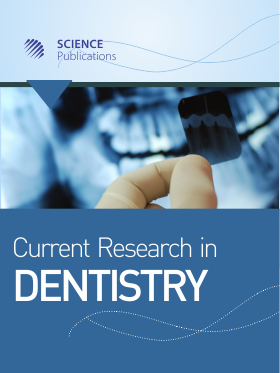Bacterial Biofilm Persistence in Human Jawbone Following Tooth Extraction: Implications of Surgical Debridement and Resident Population-Shift for Oral Implants
- 1 General and Implant Dentistry, 29 Old Princess Highway, Batemans Bay, NSW, 2536, Australia
- 2 Jinhua Institute of Zhejiang University, Jinhua, Zhejiang, 321000, China
- 3 Macquarie Medical School, Macquarie University, NSW, 2109, Australia
- 4 35 Mountain View Rd, Moruya, NSW, 2537, Australia
- 5 7Bayside St, Broulee, NSW, 2537, Australia
Abstract
Intra-radicular infection theory assumes that when an infected tooth is extracted, the main source of infection is removed and any residual contaminating bacteria are killed by the immune response, then normal healing ensues. This study investigated whether bacteria and bacterial biofilms persisted in deep bone space following tooth extraction. The study was conducted on two adult male patients seeking dental implant therapy in a private practice setting. The cases presented as (1) A single-tooth with a chronic lesion in the anterior maxilla and (2) As a mandibular full-arch where the few remaining teeth presented endodontic/periodontic lesions, while odsteolytic/osteosclerotic lesions persisted in the edentulous, apparently healed bone. Bone fragments were obtained during full-flap, sterile surgical debridement/osteotomy, for Scanning Electron Microscopy (SEM) and pyrosequencing analysis. SEM images visually confirmed the presence of bacteria and bacterial biofilms in deep apparently healed bone space in health and disease. The extraction of diseased teeth did not result in the spontaneous resolution of pathologically altered bone surfaces. Severely sclerotic bone in both cases required multiple surgical debridements to attain a vascularised health margin beyond sclerotic encapsulation with reconnection to stem-cell-rich periosteum. The clinical effect of debridement was microbial population shift, with histologic regeneration of internal osseous architecture and bone quality, according to habitat fitness. Longitudinal same-site intracommunity extinctions and additions were corroborated by SEM and microbiome analysis, together with clinical and radiographic evidence. The circumvention of resident pathogenic bacterial biofilms before implant deployment becomes a method-protocol for biofilm-based osseointegration, improving outcomes and reducing re-operations.
DOI: https://doi.org/10.3844/crdsp.2023.17.29

- 2,558 Views
- 1,341 Downloads
- 0 Citations
Download
Keywords
- Bacterial Biofilm
- Human Jawbone
- Dental Implant
- Scanning Electron Microscopy
- Surgical Debridement
- Population-Shift
